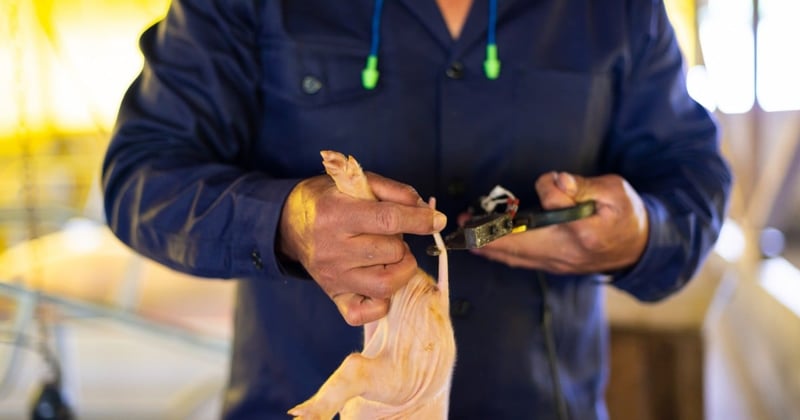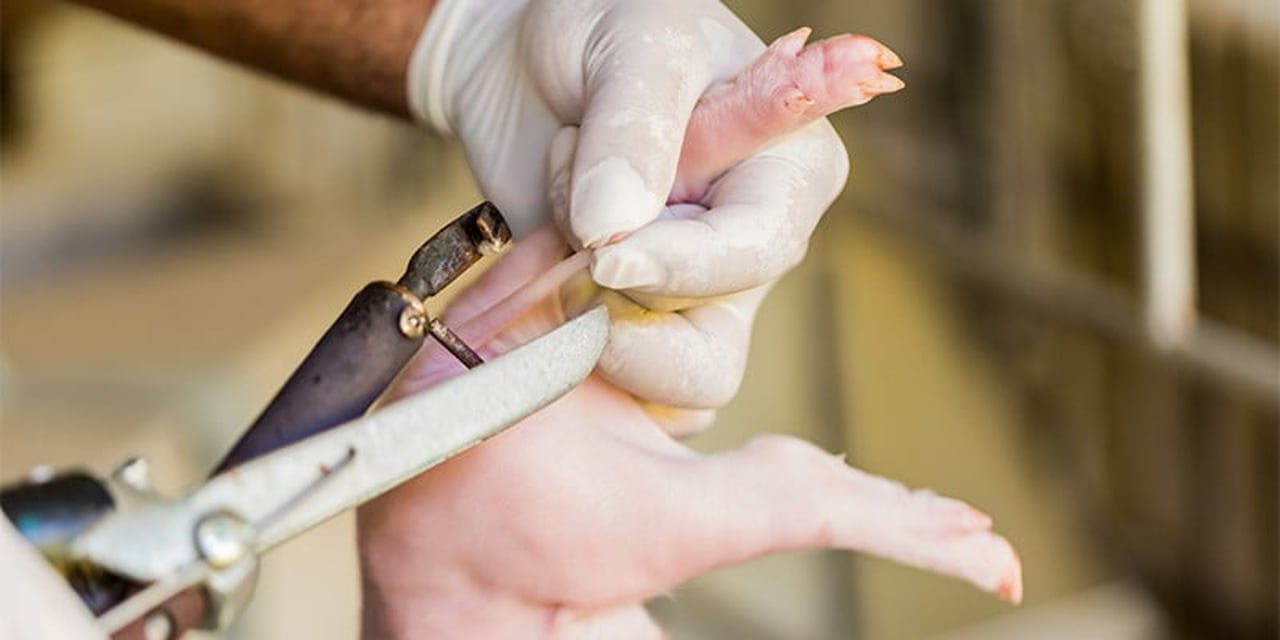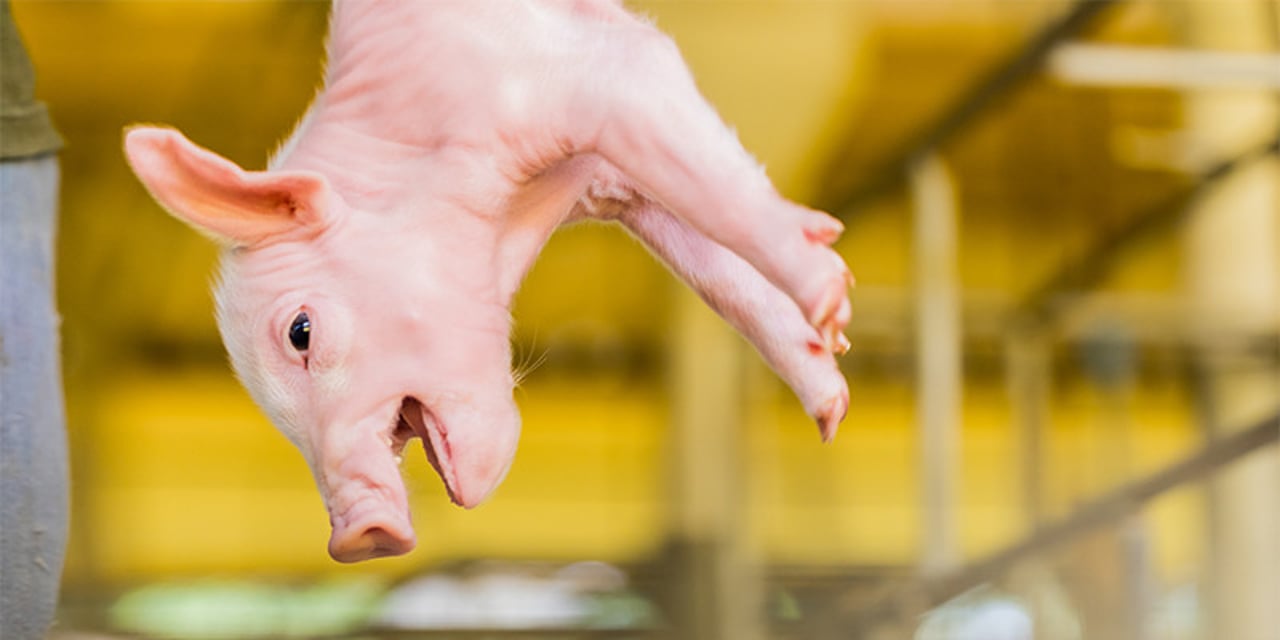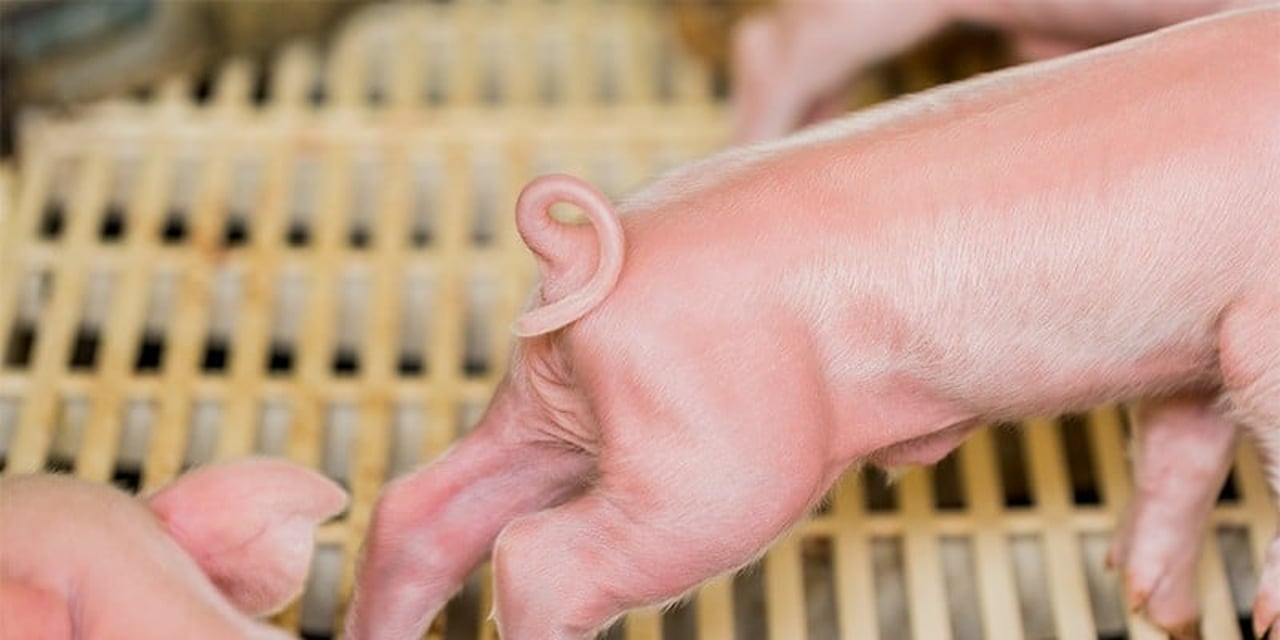
Most piglets in the UK endure painful mutilations. We explain why pork producers do this to their animals and why it’s unnecessary. The time to end cruelty is now.
Content warning: this blog contains strong images.
When most people think of pigs they think of pink snouts and cute, curly tails.
The reality, however, is that the majority of pigs reared in the UK (70 - 80%) have their tails cut off or ‘docked’, most before they are even one week old and without pain relief. This is in spite of the fact that UK law very clearly states that routine tail docking is illegal. Why then do so many pigs have their tails cut off?
Intensive Farming
In intensive indoor farms, pigs live close together in barren environments that prevent them from engaging in natural behaviours, such as the need to root and forage. When pigs are bored or stressed, they can resort to biting each other’s tails out of frustration.
In an effort to stop tail-biting from occurring farmers pre-emptively cut off the tails of piglets using clippers, pliers or through cauterisation (using very high heat to burn through the tail). Unsurprisingly, this mutilation is a very painful and stressful experience for the piglets and can have a lasting effect on their wellbeing.
The "easy way out"
While tail biting is a serious issue and can cause painful tail injuries and infection, cutting off pigs’ tails is not the solution as it does nothing to address the root causes of why pigs are driven to bite each others’ tails in the first place.
In the UK, it is only legally permitted to cut off pigs’ tails once all other possible steps have been taken to improve their environment. Such steps include providing a variety of different materials for the pigs to manipulate and explore within their pens, ensuring that they are not having to compete over access to food and water, giving pigs more space to move around in, maintaining positive pig health and nutrition, and making sure that their environment is suitable in terms of temperature and air quality.
Curly tails, happy piglets
Getting these fundamental practices right can substantially reduce the risk of tail biting, without the need to subject the pig to painful mutilations.
Tail docking causes suffering to millions of pigs every year. But if pigs’ fundamental needs are being met, routine tail docking is completely unnecessary. A healthy, intact, curly tail is in fact a good overall sign of good pig welfare, better farm management practices and a higher standard of overall pig health.
Make a difference. Join our community.
We campaign to improve animals' lives in the UK and around the world. Why not join us today?


